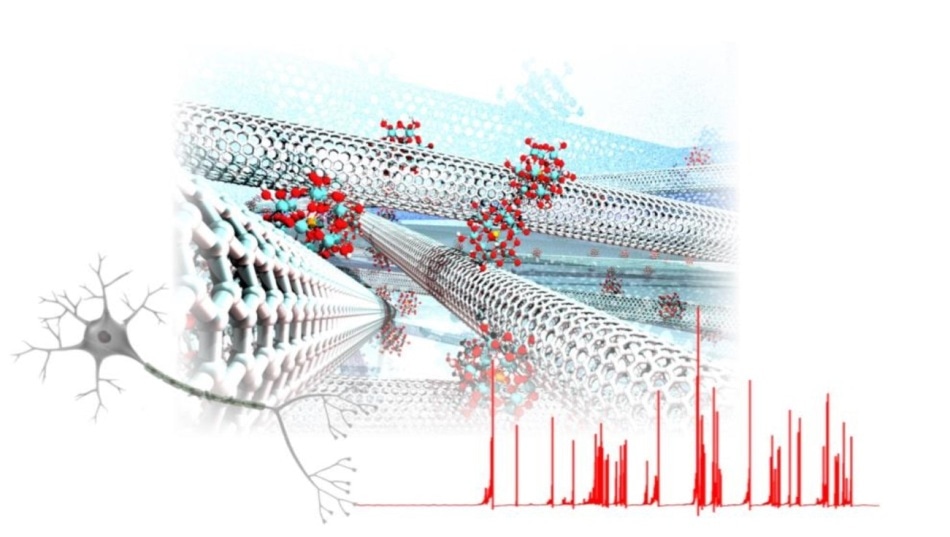Jul 13 2018
Astonishingly little energy is required for the brain to adapt to the surroundings to learn, to have high recognition ability and intelligence, to make ambiguous recognitions, and perform complex information processing.
 A Spontaneous spikes being similar to nerve impulses of neurons was generated from a POM/CNT complexed network. (Image credit: Osaka University)
A Spontaneous spikes being similar to nerve impulses of neurons was generated from a POM/CNT complexed network. (Image credit: Osaka University)
The two important attributes of neural circuits are “learning ability of synapses” and “nerve impulses or spikes.” With the progress in brain science, slowly, the brain structure has been interpreted; however, it is highly complicated to be completely mimicked. Researchers have made attempts to reproduce brain function with the help of simplified neuromorphic circuits and devices that mimic a part of the mechanisms of the brain.
Full use of the functions of production and transmission of spontaneous spikes that emulate nerve impulses (spikes) have not yet been made while developing neuromorphic chips to artificially reproduce the circuits that emulate the structure and function of the brain.
A collaborative team of scientists from Kyushu Institute of Technology and Osaka University investigated current rectification control in junctions of different particles and molecules absorbed on single-walled carbon nanotube (SWNT), with the help of conductive atomic force microscopy (C-AFM), and observed the generation of a negative differential resistance in polyoxometalate (POM) molecules absorbed on SWNT. This indicates that an unstable dynamic non-equilibrium state exists in molecular junctions.
Furthermore, the scientists developed highly dense, random SWNT/POM network molecular neuromorphic devices, producing spontaneous spikes analogous to nerve impulses of neurons.
POM comprises of metal and oxygen atoms to create a 3D framework. In contrast to ordinary organic molecules, POM has the ability to store charges in a single molecule. In this research, it was considered that spike generation from the network and negative differential resistance were brought about by nonequilibrium charge dynamics in molecular junctions in the network.
Thus, the collaborative research team headed by Megumi Akai-Kasaya performed simulation calculations of the random molecular network model compounded with POM molecules, which have the ability to store electric charges, reproducing spikes produced from the random molecular network. They also demonstrated that this molecular model would quite probably turn out to be a component of reservoir computing devices. Reservoir computing is expected to be the future-generation artificial intelligence (AI). The outcomes of the study have been reported in the Nature Communications journal.
The significance of our study is that a portion of brain function was replicated by nano-molecular materials. We demonstrated the possibility that the random molecular network itself can become neuromorphic AI.
Hirofumi Tanaka, lead author of the study
The achievements of this collaborative research team are anticipated to greatly contribute to the development of neuromorphic devices in the future.